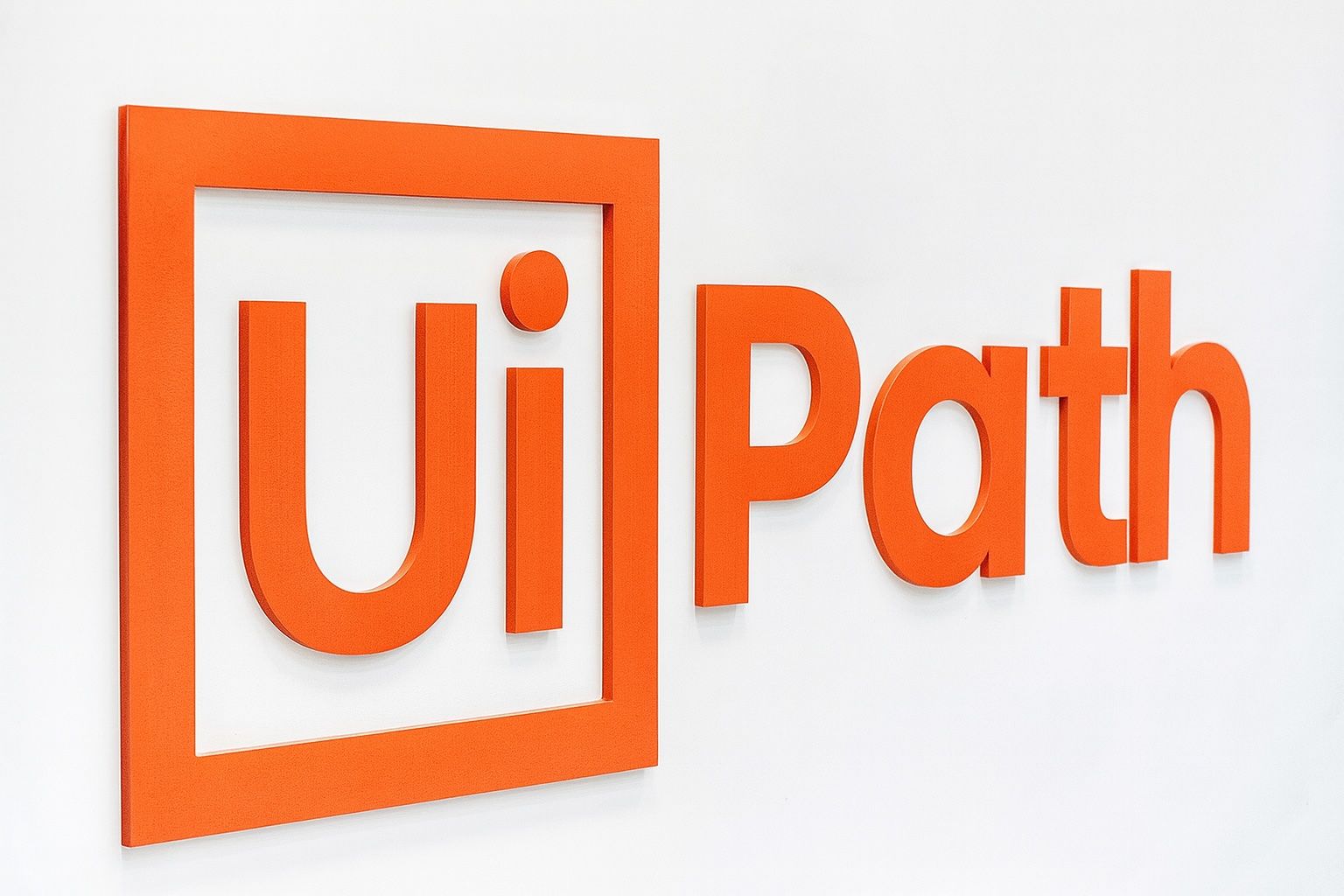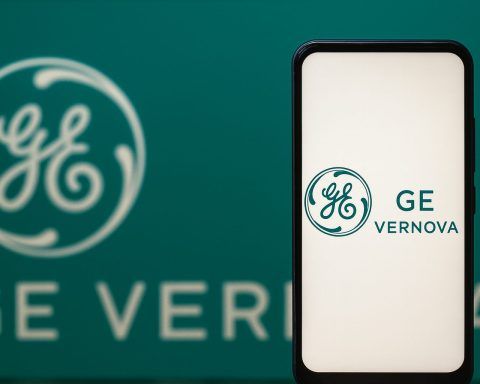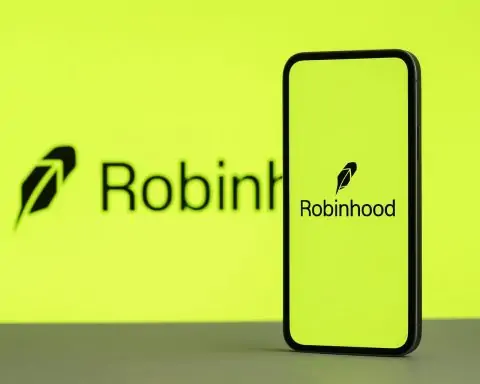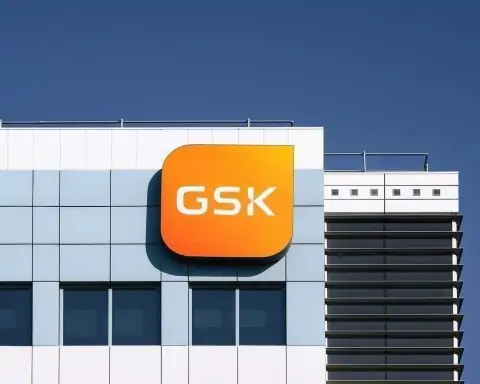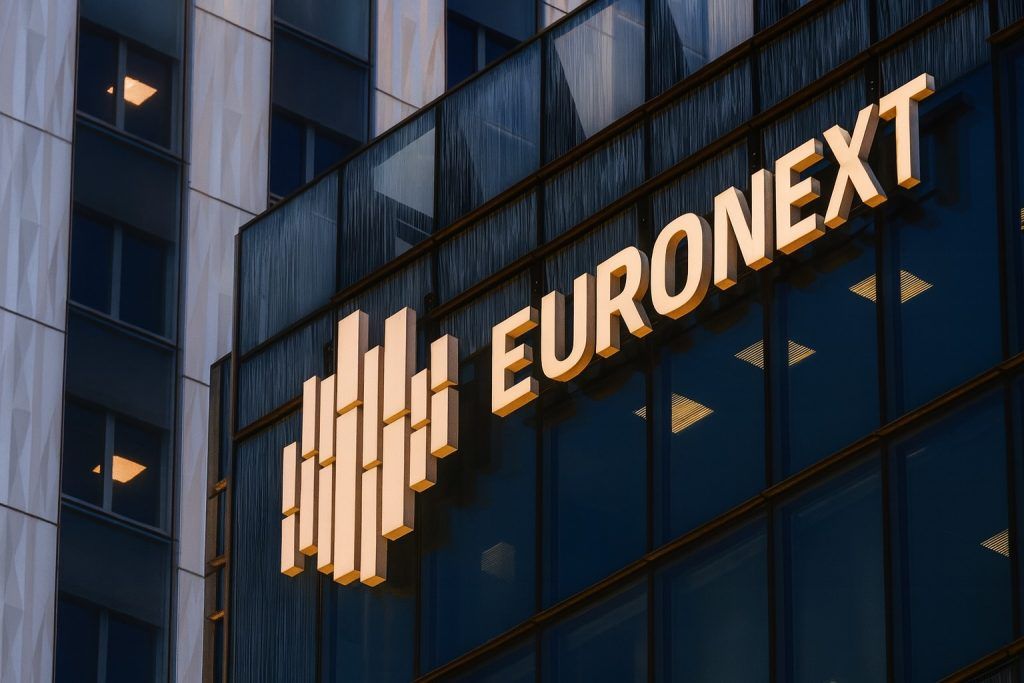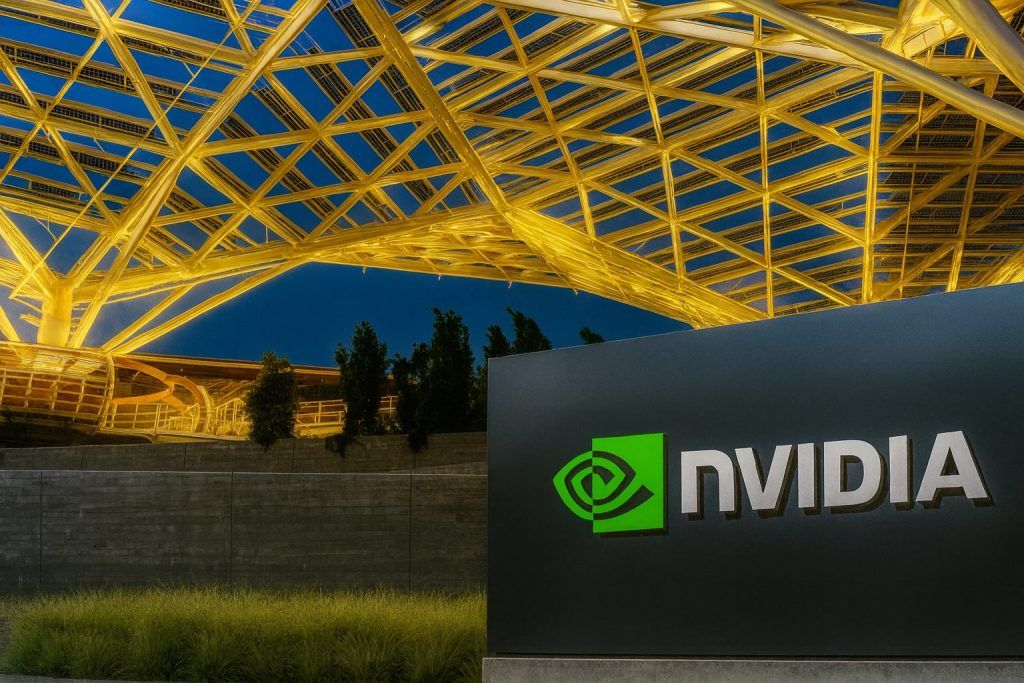- Stock Near 2025 Highs: UiPath (NYSE: PATH) is trading around the mid-$15s as of Oct. 9, 2025 – its highest levels since mid-2024 – after a 5% surge to $15.58 on Oct. 8 [1]. The stock has rallied roughly 20% over the past week, vastly outperforming broader indexes (the Nasdaq and S&P 500 just hit record highs on AI optimism [2]). Heavy volume (nearly double average) accompanied the jump [3], and shares even spiked above $16 in after-hours trading [4].
- AI Partnerships Fuel Rally: Late-September announcements of high-profile AI partnerships with OpenAI, Google, NVIDIA, and Snowflake ignited investor excitement. UiPath unveiled a ChatGPT connector with OpenAI, voice-activated automation using Google’s Gemini AI, integration of NVIDIA’s AI models for high-trust industries, and data integration via Snowflake’s Cortex AI [5] [6]. These moves position UiPath as an emerging hub in enterprise AI automation beyond its RPA roots [7] [8].
- Strong Earnings Momentum: The company’s latest quarterly results (Q2 FY2026) beat expectations, with revenue up ~14.6% YoY to $362 million and a swing to a small GAAP profit of $1.6 million [9] [10]. Annual Recurring Revenue (ARR) grew 11% to $1.723 billion [11] and free cash flow was positive ($45 million) [12]. Management raised full-year guidance slightly (FY2026 revenue now ~$1.57 billion) on “improved execution” and strong demand for its new AI-powered platform [13].
- Expert & Analyst Insight: Executives and analysts are cautiously optimistic. CEO Daniel Dines said the results reflect “the growing momentum of our agentic AI capabilities” and noted customers are “moving beyond pilots into production deployments” of AI-driven automations [14]. One analyst highlighted that UiPath achieved profitability by adding ~$45 million in revenue while cutting ~$40 million in costs – “a swing of $85 million and a very small profit” – calling it “a remarkable achievement” and a potential turning point if sustained [15]. Still, Wall Street consensus remains Hold with an average 12-month price target around $13–13.5 [16] [17], reflecting a “wait and see” stance on how fast AI initiatives will translate into growth.
- Technical Picture: The stock’s technical indicators show strong upward momentum but hint at near-term overbought conditions. PATH is well above its 50-day (~$11.7) and 200-day (~$11.9) moving averages [18] after breaking out of a months-long trading range. The 14-day Relative Strength Index is ~76, entering the “overbought” zone (above 70) [19], which could signal a short-term pullback risk. Chart-wise, $16 (around the 52-week high [20]) may act as resistance, while the prior breakout zone around $13–14 now serves as support.
- Market Leadership & Competition: UiPath remains a leader in the robotic process automation (RPA) space – named a Leader in Gartner’s Magic Quadrant for RPA for the 7th year in a row [21], and also recognized in Gartner’s new Intelligent Document Processing quadrant [22]. Key competitors like Automation Anywhere (a top private RPA firm) and Blue Prism (now part of SS&C) are racing to incorporate AI as well. Automation Anywhere recently launched its own “agentic” automation with pre-built AI agents and natural-language interfaces [23]. Meanwhile, Microsoft’s Power Automate tool (bolstered by new AI Copilot features) targets personal productivity bots. However, UiPath’s CEO argues Microsoft’s RPA offerings are “limited… mostly to personal productivity… on your desktop,” whereas UiPath focuses on fully autonomous, orchestrated enterprise workflows [24]. This open, platform-agnostic approach – integrating with all major AI players – is seen as a strategic moat for UiPath [25].
- Outlook: In the short term, market sentiment is exuberant – retail traders on Stocktwits have turned “extremely bullish” on PATH [26], dubbing it a “beast” with “no signs of slowing down.” The stock is up ~23% year-to-date [27]. But professional analysts are more measured. The median analyst forecast in fact implies modest downside from current levels (targets in the low-$13s [28]), and a rating agency (Weiss) even reaffirmed a “Sell (D)” grade on Oct. 8 [29]. Over the medium term, much of UiPath’s stock trajectory will hinge on execution: converting its AI partnerships and product launches into accelerated revenue growth. The addressable market is expanding – global enterprise automation spending is projected to more than double by 2028 (RPA alone to ~$8.2 billion) [30] – which offers significant upside if UiPath can capture a large share. For now, investors will be watching upcoming earnings (and guidance) and early signs of enterprise adoption of UiPath’s new AI features. As one analyst put it, if the company can repeat last quarter’s performance “it should finally start producing the regular profit it has been chasing for years” [31], which would strengthen the bull case for PATH.
Stock Performance: Hitting New Highs on AI Momentum
UiPath’s stock has been on a tear in early October 2025, propelled by excitement around artificial intelligence. On October 8, PATH jumped 5.13% to close at $15.58 – its highest closing price since May 2024 [32]. This capped a rapid climb from the ~$12–13 range just a week earlier. In fact, shares gapped up in late September after the company’s AI announcements, breaking out of a long trading range. The surge continued into this week, with PATH notching a new 52-week intraday high and then rising further in post-market trading (up over 7% after hours on Oct. 8, briefly +11% at one point overnight) [33].
This rally comes amid a broader tech stock boom: mega-cap tech companies’ own AI news and upbeat market sentiment pushed the Nasdaq and S&P 500 to all-time records in the same period [34]. UiPath has been a beneficiary of the market’s “AI frenzy.” Notably, trading volume in PATH has swelled – nearly double the average volume on Oct. 8 [35] – signaling heightened interest from investors.
In comparison to major indexes, UiPath has strongly outperformed in recent days. The Nasdaq Composite is up about 1%+ this week to record levels [36], but PATH has jumped roughly 20% over the last 5 trading sessions. Year-to-date, UiPath stock is now up ~23% [37], a significant turnaround given that it traded as low as ~$9–10 during the summer doldrums [38].
Context: From Summer Lows to Autumn Highs
Earlier in 2025, UiPath’s stock struggled under broader tech-market pressures – rising interest rates and cautious IT spending had dragged shares into the single digits by mid-year [39] [40]. However, momentum shifted with a one-two punch of positive developments: strong quarterly earnings that showed a return to profitability, and a series of AI partnership announcements (discussed below). These catalysts rejuvenated market confidence in late September. On Sept. 29, PATH closed at $12.56, then spiked over 20% to around $15.30 in pre-market trading Sept. 30 after the news hit [41]. It closed that day up 6.5% at $13.38 [42], and continued climbing to ~$14–15 in the first week of October [43]. By Oct. 6, the stock was consolidating in the mid-$13s [44] – already near its 52-week high of ~$16 – before the latest surge carried it into new high ground near $15.5–16.
Investors appear to be pricing in optimism that UiPath’s bets on AI will drive faster growth. The stock’s sharp rebound from summer lows also reflects relief over its financial turnaround (small profit and improved cash flow) and the sense that the company has new catalysts on the horizon. In the words of one bullish trader, “$PATH [shows] no letup in the rally… this beast shows no signs of slowing down!” [45]. Such exuberance is evident across social media, although, as we’ll see, Wall Street analysts are advising some caution even as they acknowledge the improved outlook.
Recent News & Developments (Past Week)
In the past week (Oct 2–9, 2025), several notable developments have kept UiPath in the headlines:
- Major AI Partnerships Unveiled: UiPath’s annual customer event, FUSION 2025 (held late last week in Las Vegas), served as the launchpad for a flurry of AI partnership announcements. The company revealed collaborations with some of tech’s biggest names:
- OpenAI: integrating OpenAI’s GPT models via a new ChatGPT connector, so that enterprises can plug advanced generative AI into their UiPath automation workflows [46] [47].
- Google: a partnership with Google Cloud to leverage Google’s upcoming Gemini AI (large language model) for voice-enabled “conversational” automation agents [48]. This will allow users to interact with UiPath bots through natural speech and prompts.
- NVIDIA: teaming up with NVIDIA to bring secure, on-premises AI model integration to high-trust industries. Specifically, UiPath will support NVIDIA’s open-source AI models (like the Nemo large language model and NIM inference platform) to enable advanced use cases such as fraud detection within UiPath’s platform [49].
- Snowflake: a new partnership with Snowflake’s Cortex AI, aiming to connect UiPath’s automation bots with insights from data in the Snowflake cloud. This “data+AI” integration lets software robots act on business data in real time [50].
- Product Launches – Agentic Automation Platform: Alongside partnerships, UiPath used its conference to roll out new platform features that harness AI. For example, the company introduced UiPath Maestro, an orchestration tool to coordinate multiple AI agents and bots across workflows, and AI Agent Builder, a toolkit for developing custom AI-powered assistants [53]. It also showcased Studio Web (a web-based automation design interface) and other enhancements designed to simplify deploying AI in production with enterprise-grade governance [54]. In a Sept. 30 press release, UiPath even rebranded itself as “a global leader in agentic automation” – underscoring the strategic pivot to AI-driven autonomous agents [55].
- Executive Commentary: At Fusion 2025 and in earnings calls, UiPath’s leadership hammered home the message that automation and AI are “stronger together.” CEO Daniel Dines – who returned as chief executive in 2024 to lead this AI transition – stressed that many customers are now moving from proofs-of-concept to real deployments of agentic AI. “Our best-in-class products are enabling customers across industries to move beyond pilots into production, orchestrating agents, robots, and humans to achieve real outcomes,” Dines said, noting that clients find automation + AI delivers tangible value already [56]. He added that “customers consistently tell us… agentic AI [and] automation are stronger together”, affirming UiPath’s belief that its platform can be a central ROI driver for enterprises adopting AI [57].
- Analyst & Investor Reactions: Financial analysts have been digesting UiPath’s AI blitz. On the bullish side, Morgan Stanley’s team took note of the potential for AI to re-accelerate growth – analyst Sanjit Singh kept an Equal-Weight rating but raised his price target from $12 to $15 after the late-September news, citing greater long-term opportunity from AI initiatives [58]. A few smaller analysts even upgraded the stock; for instance, Zacks Investment Research bumped UiPath to a “Strong Buy” in early October (though Zacks uses a short-term quantitative model) [59]. However, others counsel patience: DA Davidson initiated coverage at Neutral with a $12 target, essentially saying “show me more consistency” before turning bullish [60]. And notably on Oct. 8, Weiss Ratings (an investment rating firm) reaffirmed its “Sell (D)” rating on PATH – highlighting that some still have a negative outlook [61]. The Weiss report came even as the stock was surging 5%+ that day, illustrating a disconnect between short-term market euphoria and cautious long-term expectations.
- Other Developments: There were no major leadership changes or M&A announcements from UiPath this week. However, one noteworthy disclosure was that CEO Daniel Dines sold a chunk of his shares in early October – per SEC filings, on Oct. 8 he sold ~122,700 shares at an average ~$14.89 (worth ~$1.83 million) [62]. This sale reduced his stake by about 14%. Such insider selling can be routine (Dines still holds over 736,000 shares [63]), but investors often watch these moves for signals. It’s unclear if this was part of a pre-arranged plan, but coming on the heels of the recent run-up, it’s something the market will note. Meanwhile, UiPath’s competitors made some news of their own: privately-held Automation Anywhere held its own user conference where it touted new AI features similar to UiPath’s (with phrases like “pre-trained AI agents” and natural language Automation Co-Pilot capabilities) [64]. And Microsoft rolled out further integrations of generative AI into its Power Automate platform as part of its 365 Copilot launch. These competitive moves underscore that the RPA/automation race is accelerating in the AI era – a rising tide that could lift all boats, or at least keep everyone on their toes.
In summary, the past week has been packed with positive news for UiPath – solid financials, big-name partnerships, and enthusiastic reception from both customers and many investors. The stock’s strong performance reflects that string of good news. The key question going forward is whether the company can capitalize on this momentum and deliver tangible growth from these initiatives.
Technical Analysis: Momentum vs. Overbought Signals
From a technical analysis standpoint, UiPath’s chart has rapidly turned bullish in recent weeks. The stock’s decisive breakout above the $13 level on high volume is a clear positive signal. It pushed above a resistance zone in the low-teens that had capped rallies for much of 2025. Now trading in the mid-$15s, PATH is comfortably above key moving averages and showing strong momentum – but also some signs of short-term overextension.
Moving Averages: The 50-day moving average (50 SMA) for PATH is around $11.74, and the 200-day MA is about $11.93 [65]. The fact the stock is ~30% above both averages indicates a robust uptrend. In coming days, we may even see a “golden cross” (where the 50-day crosses above the 200-day) if prices remain high – often interpreted as a long-term bullish omen. These MAs could now serve as dynamic support levels on any pullback. Nearer term, the prior resistance around $13–14 (the September highs) may also act as support, as investors who missed the first rally look to buy dips in that zone.
Relative Strength Index (RSI): The 14-day RSI for UiPath has climbed into the mid-70s, roughly 76 as of Oct. 8 [66]. Typically, an RSI above 70 denotes overbought conditions – meaning the stock has run up very quickly and could be due for consolidation or a mild correction. It doesn’t guarantee a drop (stocks can stay overbought in strong rallies), but it does flash a caution sign that the near-term upside might be limited without a breather. Indeed, some traders may start taking profits or using tighter stops at these levels, especially since PATH has risen for multiple days in a row.
Momentum and MACD: While we don’t have the exact Moving Average Convergence Divergence (MACD) values here, the MACD – which tracks short-term vs long-term momentum – is undoubtedly in positive territory given the magnitude of the recent move. The surge likely caused a bullish MACD crossover in early October. Momentum oscillators overall point to strong positive trend momentum. However, one might watch for the MACD histogram to peak or turn down, which would indicate momentum waning. With such a vertical climb, a slowdown in the pace of gains would be natural.
Volume & Volatility: Volume spiked dramatically on the rally days (Oct 6–8 saw 30–40+ million shares traded each day, versus ~21 million average) [67]. This confirms the breakout’s validity – heavy participation by buyers. Implied volatility for the stock’s options likely jumped as well, reflecting a higher range of expected near-term swings. Traders should be prepared for bigger daily moves (the stock swung between ~$14.17 and $15.59 intraday on Oct 7 alone [68], a range of 10% in one session).
Key Levels: On the upside, $15.93 was the 1-year high (intraday) for UiPath prior to this week [69]. The stock is testing that level now; a clean break past ~$16 on strong volume could open the door to further gains, with potential minor resistance around $17.5 and $18 (the upper end of analysts’ bullish targets [70]). Above that, chart watchers might eye the next psychological level at $20, though that would likely require significantly more good news. On the downside, initial support is around $14.80 (the Oct 8 closing region), then $14.0, and the aforementioned $13–13.5 zone. A pullback toward the low teens would still keep the uptrend intact as long as it forms a higher low versus the summer.
Trend Outlook: In the immediate term, momentum is bullish but may be near a short-term peak. The stock’s rise has been steep, and the overbought RSI and huge volume surge could mean a lot of buyers have already piled in. It wouldn’t be surprising to see some consolidation between, say, $14 and $16 to digest the gains. That could even be healthy before any further rally. Traders will be monitoring if PATH can hold above its breakout point (~$13) during any dip – holding there would confirm a new uptrend regime. The intermediate trend (next 1-3 months) will likely depend on fundamental catalysts like the next earnings report and any follow-through on AI deals. Positive news there could spur another leg up, while disappointment could cause a retracement.
For now, the technical backdrop is constructive: higher highs and higher lows are being established. Just keep an eye on those indicators – if RSI falls back below 70 and volume returns to normal, it could mark the end of the “burst” of enthusiasm and a shift into a slower grind or sideways pattern. Conversely, another spike in price with RSI staying extreme might eventually trigger a sharper snap-back. In summary, bulls are in control of PATH’s chart, but the stock might be due for a pit stop after racing ahead on AI adrenaline.
Fundamental Analysis: Financial Health and Growth Prospects
Beyond the market hype, UiPath’s fundamentals have been improving in 2025, which underpins the recent optimism. The company’s second-quarter FY2026 earnings (for the quarter ended July 31, 2025) showed solid progress on revenue growth, profitability, and cash flow:
- Revenue Growth: Q2 revenue was $361.7 million, up 14.6% year-over-year [71]. This marked an acceleration from the single-digit growth rates of earlier quarters [72], suggesting demand is picking back up. Importantly, UiPath also modestly beat analysts’ revenue expectations (consensus was around $347M for the quarter [73]). For a company that had seen growth decelerate the previous year, this double-digit increase and beat were well-received. The Annual Recurring Revenue (ARR) – a key metric for SaaS-like businesses – reached $1.723 billion, up 11% YoY [74]. Moreover, net new ARR of $31 million in the quarter indicates existing customers are expanding usage (UiPath’s net retention rate is ~108% [75]) and new customer wins are contributing.
- Earnings and Profitability: UiPath surprised many by swinging to a GAAP profit in Q2. It reported net income of $1.6 million, versus a large $86 million loss in the year-ago period [76] [77]. On an adjusted basis, earnings were $0.15 per share, handily beating the $0.08 consensus estimate [78]. While a $1.6M profit is essentially break-even, the significance is that UiPath’s aggressive investment phase (which led to persistent losses) may be turning a corner. One industry analyst, Holger Mueller of Constellation Research, noted that “UiPath did this by growing its top line by around $45 million while simultaneously reducing operating expenses by nearly $40 million… [an] $85 million swing and a very small profit”. He called it “a remarkable achievement” given that revenue growth, while solid, “wasn’t exactly sensational” [79]. In other words, management’s cost discipline combined with moderate growth was enough to tip into profitability – a promising sign for operating leverage. If UiPath can continue this balance (Mueller added that “one more quarter like this” could mean sustainable profits [80]), it would validate the company’s business model after years of red ink.
- Cash Flow and Balance Sheet: Alongside earnings, UiPath generated $45 million in free cash flow in Q2 [81], thanks to efficient working capital and cost management. The company has been focusing on cash generation, and this positive FCF shows they’re not burning cash to grow – a crucial point in an environment where investors favor self-sustaining tech firms. UiPath also carries a hefty cash reserve: about $1.52 billion in cash and equivalents on its books as of the quarter [82]. This war chest (with no debt of equivalent size reported) provides a cushion and flexibility for strategic investments, R&D, or potential acquisitions. In short, financial health is solid – ample cash, and now approaching break-even or better on both earnings and cash flow. Key ratios like gross margin remain high (around 84% last year, typical for software, though not explicitly updated in this quarter’s data).
- Guidance and Outlook: On Sept. 6, when releasing Q2 results, UiPath raised its full-year guidance slightly. It now expects FY2026 (calendar 2025) revenue of approximately $1.571–1.576 billion [83], up from a prior $1.549–1.554B. This implies ~19% YoY growth for the second half, suggesting an acceleration from the first half – likely anticipating some boost from AI products or seasonal strength in enterprise spending. For the upcoming Q3 (Aug–Oct quarter), the company forecasted revenue of $390–395 million [84]. Notably, Wall Street’s consensus was a bit lower (around $384.6M for Q3, $1.55B for FY) [85], so UiPath’s guidance was ahead of expectations. That confidence contributed to the post-earnings stock jump. CFO Ashim Gupta struck an optimistic tone, saying “momentum… from customers and partners around our agentic automation platform, combined with continued focus on operational efficiency, positions us well as we enter the second half of the year.” [86] [87]. In essence, management believes the AI-fueled interest will translate to more deals and that they can keep expenses in check – a recipe for improving margins.
- Customer Adoption & Product Mix: UiPath now serves over 10,000 customers (as of earlier in 2025) including many Fortune 500 firms, though the exact current count wasn’t stated in this quarter’s releases. What’s clear is that customer expansion is healthy (108% dollar-based net retention means the average existing customer spends 8% more than last year [88]). The introduction of new AI features could drive further expansion as companies add AI modules to their subscriptions. UiPath’s platform approach – offering an end-to-end suite from process mining to RPA to AI bots – gives it a broad footprint in client organizations. This quarter, for example, saw strong uptake of its automation cloud services and continued growth in Annual Recurring Revenue, indicating customers are signing longer-term commitments [89]. One challenge remains new license growth – the RPA market has been maturing, and UiPath’s license revenue had slowed previously. But the hope is that “agentic AI” capabilities open up fresh demand. As CEO Dines described, UiPath is evolving from just rule-based bots for back-office tasks to more intelligent “digital laborers” that can handle cognitive tasks with minimal supervision [90] [91]. This could increase the platform’s value to customers (and the prices they’re willing to pay), essentially expanding the TAM (total addressable market) per customer.
- Competitive Moat: From a fundamental perspective, a key strength for UiPath is its market leadership and ecosystem. It has one of the largest communities of RPA developers and partners, and a brand synonymous with automation. Gartner’s latest analysis again put UiPath in the Leaders quadrant for RPA (for the 7th straight year) [92], underscoring continued technical leadership. Additionally, Gartner in 2025 also named UiPath a Leader in the newer Intelligent Document Processing space [93] – important because it shows UiPath’s AI-driven document understanding tech is top-tier, complementing its RPA. These accolades matter for sales: CIOs often shortlist the “Leaders” when choosing automation solutions. UiPath’s large partner network (system integrators like Deloitte, etc.) also amplifies its reach – partners often recommend UiPath to clients and build solutions around it. Dines highlighted that SIs see a “$4-5 in services for every $1 in UiPath license” sold, making UiPath an attractive platform for them to champion [94] [95].
In sum, UiPath’s fundamentals are on an upswing. After a rocky 2022–2024 period where growth slowed and losses mounted, the company appears to be executing a turnaround: growth is back to a respectable mid-teens pace, costs are under control, and new AI-driven products could reaccelerate demand. The balance sheet is strong, giving room to invest in AI R&D and go-to-market. If there’s a caution, it’s that much of the AI story is still forward-looking – the currentrevenue boost from those new partnerships is minimal (they were just announced). Also, competition in automation is fierce (and some rivals are also growing), so UiPath must continue to innovate to defend its share. But with improving financial health and a bold strategy, the company’s fundamental trajectory looks positive heading into 2026.
Competitive Landscape: UiPath vs. Automation Anywhere, Blue Prism, Microsoft & Others
UiPath operates in the RPA (Robotic Process Automation) and broader hyperautomation market, which is getting an AI-infused makeover in 2025. The competitive landscape features both pure-play automation vendors and big tech companies encroaching with their own automation tools. Here’s how UiPath stacks up against key rivals:
- Automation Anywhere: Along with UiPath, this is the other leading pure-play RPA provider (privately held, valued around $7 billion in its last funding). Automation Anywhere has been neck-and-neck with UiPath in Gartner’s Magic Quadrant leadership. In response to the AI wave, Automation Anywhere has launched its own “agentic automation” initiatives, similar to UiPath’s push. Recently, it introduced pre-trained AI digital agentsand a natural language interface that lets business users describe a task and have a bot execute it [96]. Essentially, they’re integrating generative AI (via partnerships with large model providers) to allow users to build automations with plain English prompts – the same idea as UiPath’s platform allowing “Conversational AI” and GPT-based bots. Automation Anywhere’s strength has traditionally been ease-of-use and cloud-native deployment, whereas UiPath is known for a rich feature set and large community. Both are converging now, adding AI features aggressively. Neither has a clear technological edge in AI yet – it may come down to who can market and implement solutions faster. UiPath’s advantage is its larger size (ARR is roughly double that of AA’s, which was around $800M ARR last reported) and global sales presence as a public company. But Automation Anywhere remains a formidable competitor, often the final two with UiPath in big enterprise deals. The competition is likely to intensify as both claim to offer the best AI-augmented automation platform. We might see pricing pressure or accelerated innovation as a result. Notably, Automation Anywhere has not gone public yet, and some speculate it could be acquired by a bigger firm – something that could alter the landscape.
- Blue Prism: Hailing from the UK, Blue Prism was an early RPA pioneer (founded 2001) and was public in London until its acquisition by SS&C in 2022. Now known as SS&C Blue Prism, it’s part of a larger software conglomerate. Blue Prism historically had a strong foothold in financial services and a reputation for robust, secure deployments (though with a steeper learning curve than UiPath). Since the acquisition, Blue Prism has been somewhat quieter in the market hype, but it’s still considered a top-tier RPA vendor. In fact, Blue Prism continues to be recognized – it’s also in the Leaders quadrant of Gartner’s 2025 RPA report alongside UiPath and AA [97](as anecdotally indicated by SS&C’s website). Blue Prism has been incorporating AI through partnerships and its Digital Exchange marketplace. However, some in the industry feel Blue Prism lost momentum and market share to UiPath and AA over the past few years, partly due to less aggressive marketing and the disruption of being acquired. Still, for many large enterprises (especially in Europe), Blue Prism is a trusted name, and SS&C’s ownership could ensure stability and integration with other enterprise software. UiPath competes against Blue Prism primarily on large enterprise accounts – UiPath often touts its end-to-end platform and ease of building complex workflows, while Blue Prism emphasizes governance, security, and out-of-the-box solutions. Both are likely to coexist, but UiPath currently has the growth edge. Going forward, watch if SS&C Blue Prism makes new AI partnerships or investments – it might not match UiPath’s splashy OpenAI/Nvidia deals, but it could leverage SS&C’s resources to improve its AI capabilities too.
- Microsoft Power Automate: Microsoft is the wildcard competitor in this space. With Power Automate (formerly Microsoft Flow), part of the Power Platform, Microsoft offers robotic process automation and workflow automation tightly integrated with the Office 365/Dynamics ecosystem. In 2023, Microsoft also launched Power Automate Desktop for Windows 10 users at no extra cost, essentially commoditizing basic RPA for individuals. Now in 2025, Microsoft has infused Power Automate with AI Copilot features – allowing users to build flows using natural language and leveraging Azure OpenAI Service for AI-driven actions. This directly overlaps with some of UiPath’s functionality, especially for simpler tasks and personal productivity automation. However, UiPath’s CEO Daniel Dines views Microsoft more as a partner-platform than a direct threat in core enterprise automation. He noted that Microsoft’s RPA competition is “limited, mostly to personal productivity… a bot that works with you on your desktop. We focus a lot more on having our robots work autonomously.” [98] In other words, Microsoft helps individual workers automate their own tasks (and yes, it can do more, but that’s the focus), whereas UiPath orchestrates hundreds of bots and AI agents across an enterprise in a coordinated way. Moreover, UiPath runs on Microsoft’s cloud (Azure) and integrates with Office, so there’s also partnership. The risk for UiPath is if Microsoft decides to seriously ramp up its automation offerings for enterprise scenarios, leveraging its huge customer base. So far, Microsoft has been content to include basic RPA as a feature of its ecosystem rather than a full suite like UiPath’s. Many large UiPath clients also use Power Automate for smaller-scale needs. So the relationship is coopetition. Analysts generally don’t see Microsoft displacing UiPath at complex automation projects in the near term, but it’s a competitor that can’t be ignored given its resources.
- IBM, SAP, Salesforce & Others: A few other big players touch on UiPath’s space. IBM acquired WDG Automation in 2020 and offers RPA as part of IBM Cloud Pak for Business Automation, though IBM’s presence is more in adjacent areas (AI ops, BPM, etc.) and hasn’t significantly challenged UiPath in deals. SAP has built some RPA into its Solution Manager for SAP workflows. Salesforce, through its MuleSoft unit, also entered automation (MuleSoft RPA). These are more niche or limited in scope compared to UiPath’s cross-application capabilities. Then there are newer startups focusing on AI-driven automation – e.g., Automation Anywhere spin-offs, or companies that apply large language models directly to process automation. UiPath also must outpace those innovators; hence its aggressive strategy to incorporate any and all relevant AI (better to partner with OpenAI, etc., than be disrupted by a startup doing it).
- Market Position: All said, UiPath today is often regarded as the market leader in RPA/hyperautomation by revenue and ecosystem size. It reportedly has the largest share of the pure-play RPA market. A recent IDC forecast projected the RPA software market to more than double to $8.2 billion by 2028 [99] – indicating plenty of room for multiple winners. UiPath’s goal is clearly to expand beyond traditional RPA into a broader automation platform infused with AI (“enterprise OS for automation”). If successful, this could fend off single-feature competitors. But it will face heavy competition from both similar platforms like Automation Anywhere/Blue Prism and from tech giants bundling automation into their offerings.
In summary, UiPath leads on many fronts – technology recognition, community, and arguably vision with its agentic AI platform. Competitors are fast followers: Automation Anywhere closely mirrors UiPath’s moves, Blue Prism provides a solid alternative for big companies, and Microsoft covers the low-end and could upscale. The competitive dynamics will likely drive continuous innovation (good for customers). For investors, it means UiPath must execute well to maintain its edge. The next year will show if UiPath’s open-partner approach (working with everyone from OpenAI to Google) truly differentiates it. Daniel Dines has remarked that this Switzerland-like strategy – being platform-agnostic – is UiPath’s moat: “This open approach… integrating with all major AI players… [is] seen as UiPath’s strategic moat.” [100] Time will tell if that holds, but at least for now, UiPath has the attention of the industry and appears to be in a leadership position as automation enters the AI age.
Analyst Forecasts and Stock Outlook
What is the road ahead for UiPath’s stock? After the recent rally, the short-term outlook is a mix of enthusiasm and caution. Many analysts acknowledge UiPath’s improving fortunes but are hesitant to call it a strong buy at current valuations. Here’s a look at the forecasts and sentiment from Wall Street and beyond:
- Wall Street Ratings: According to MarketBeat data, as of early October 2025 the stock has an average rating of “Hold.” Out of 18 analysts, 1 is at Strong Buy, 2 at Buy, 12 at Hold, and 3 at Sell [101]. This skews more neutral/negative than positive, reflecting some lingering skepticism. The average 12-month price target is about $13.21 per share [102], which is actually ~15% below the current trading price (~$15.50). In other words, analysts collectively think the stock might have gotten a bit ahead of its fundamentals after the AI news spike. Price targets range widely – roughly $10 on the bearish end to $18 on the bullish end [103]. The high end ($18) likely comes from one of the more optimistic firms, implying they see substantial upside if AI initiatives gain traction. The low end ($10) probably assumes things get worse economically or that competition eats into growth. But most targets cluster in the $12–15 zone.
- Recent Changes: Several analysts revised their views in light of UiPath’s Q2 earnings and AI announcements. As mentioned, Morgan Stanley raised its target to $15 (from $12) and maintained an Equal-Weight rating [104], essentially saying the stock is fairly valued around the mid-teens until we see more evidence of acceleration. Canaccord Genuity (a smaller firm) reportedly trimmed its target from $16 to $15 while keeping a Buyrating [105] – they’re still bullish but perhaps locking in some gains given the quick run-up. Truist Financial cut their target from $13 to $12 and keeps a Hold [106], showing caution on near-term execution. On the flip side, Weiss Ratings’ “Sell (D)” isn’t a price target per se, but it underscores a bearish stance even after earnings [107]. Weiss’s model likely focuses on factors like recent profitability, competitive risks, etc. Additionally, the investment research firm DA Davidson initiated at Neutral/$12 (as noted) – their analyst commented that while UiPath’s turnaround is encouraging, they want to see “more consistent execution” and proof that the AI partnerships lead to faster bookings growth before getting more bullish [108].
- Valuation Perspective: Part of the reason for hold ratings is valuation. At ~$15.5, UiPath’s market cap is about $8.3 billion [109]. Given revenue guidance of ~$1.57B for this year, the stock trades at ~5.3 times forward revenue – not cheap for a ~15% growth company, but not crazy in the software world, especially if growth could reaccelerate to 20%+ with AI. However, on an earnings basis, traditional metrics look high: the trailing P/E is over 500 (since GAAP earnings are minimal) [110], and even on a forward basis, UiPath is expected to post a slight net loss for the full fiscal year (analysts predict -$0.17 EPS for FY2026) [111]. So essentially investors are valuing UiPath on revenue and potential rather than current profits. This leaves some execution risk – any slowdown or disappointment could hurt the stock as there isn’t a big earnings cushion yet. Conversely, if UiPath starts posting steady profitable growth, there could be significant upside as more investors would be willing to pay a premium for an AI-leveraged growth story.
- Short-Term (Next 1-2 quarters): Most analysts expect UiPath will at least meet its guidance for Q3 and Q4, given the upbeat commentary. The near-term stock drivers will be Q3 earnings (likely reported in early December 2025) and any signs of increased demand from the new AI features. If UiPath delivers another beat-and-raise quarter (exceeding the $390–395M Q3 revenue guide and perhaps raising FY guidance again), that could validate the bullish sentiment and perhaps cause some of those holdouts to upgrade their targets. On the other hand, if macroeconomic factors (like delayed enterprise budgets or Middle East geopolitical tensions, etc.) cause a stumble, the stock could pull back to the low teens as investors re-assess growth prospects. The consensus seems to be that Q3 will be solid – Wall Street expects around $392M revenue (the midpoint of guidance) and break-even EPS. Any surprise on profitability (like a second GAAP-profitable quarter) would be a positive catalyst.
- Medium-Term (6-12 months): Looking into 2026, the outlook hinges on AI adoption. UiPath’s strategy has opened a lot of possibilities: new products, upselling AI to existing customers, possibly attracting new types of customers interested in automation because of AI. If the company can accelerate revenue growth into the 20%+ range next year (versus ~15% this year), many analysts would likely revise their targets upward. The bullish $18 target on the street likely assumes something like re-accelerating growth and expanding margins, which could be driven by AI being a “must-have” upgrade. Additionally, broader market sentiment on AI stocks will play a role – 2025 has seen periods of both hype and digestion in AI names. Should AI enthusiasm remain high (or even frothy), UiPath as a mid-cap AI beneficiary could attract more investor attention and a higher multiple. On the flip side, if the economy weakens or the AI buzz fades without concrete ROI, UiPath’s stock could languish. Some analysts have compared the current trend to past tech hype cycles: the real enterprise spending might come a bit later after initial experiments.
A JPMorgan or Goldman Sachs hasn’t been quoted here, but typically larger banks had been neutral on PATH earlier in the year due to growth concerns. It wouldn’t be surprising if one or two upgrade or downgrade based on how the next quarter goes. Keep an eye on any new analyst initiations or coverage as well – sometimes after big events like Fusion, more analysts will publish deep-dive notes on the company.
- Investor Sentiment: Beyond sell-side analysts, institutional investors (fund managers) have shown mixed behavior. Some hedge funds increased stakes earlier in 2025 when UiPath’s price was low, seeing a value play in the turnaround. Now with the rally, we might see some profit-taking. However, if UiPath demonstrates it can be an “AI winner”, more growth-oriented funds could jump in. One consideration: UiPath is one of the few pure-play automation/AI software stocks – competitor Automation Anywhere is private, and Blue Prism is under SS&C. So if investors want exposure to the theme of “AI in automation”, UiPath is a primary vehicle. This thematic appeal could support the stock price through volatility.
In conclusion, the stock outlook for UiPath is cautiously optimistic. The consensus 12-month forecast of roughly $13–14 [112] suggests limited upside from here according to analysts, but those targets may prove conservative if UiPath’s AI gambit succeeds. Conversely, the stock’s strong recent gains could be tested if any of the promised AI benefits don’t materialize quickly – especially given the high expectations now baked into the price. As one industry observer quipped, UiPath’s transformation has opened a huge market opportunity, but “analysts are waiting for proof that AI wins will translate into faster bookings” [113].
Investors should watch the upcoming earnings, customer case studies of AI use, and competitive moves. In the very near term, some consolidation in the stock is possible (as technicals indicated). But over a medium horizon, the path for PATH will likely follow its execution: deliver on growth and profitability, and the stock should have more room to run; stumble, and a pullback toward fundamentals could occur. For now, UiPath has successfully reignited its narrative – from a faltering RPA vendor to a rejuvenated AI automation leader – and that is something many will be keeping a close eye on as 2025 closes out.
Sources: UiPath stock and news data from ts2.tech, Stocktwits, MarketBeat and company press releases [114] [115] [116] [117], analyst commentary from SiliconANGLE and others [118] [119], and competitive insights from industry reports and Gartner findings [120] [121].
References
1. stocktwits.com, 2. markets.chroniclejournal.com, 3. stocktwits.com, 4. stocktwits.com, 5. ts2.tech, 6. ts2.tech, 7. ts2.tech, 8. ts2.tech, 9. ts2.tech, 10. siliconangle.com, 11. ts2.tech, 12. ts2.tech, 13. siliconangle.com, 14. siliconangle.com, 15. siliconangle.com, 16. ts2.tech, 17. www.marketbeat.com, 18. www.marketbeat.com, 19. stocktwits.com, 20. www.marketbeat.com, 21. ts2.tech, 22. ts2.tech, 23. ts2.tech, 24. www.crn.com, 25. ts2.tech, 26. stocktwits.com, 27. stocktwits.com, 28. stocktwits.com, 29. www.marketbeat.com, 30. ts2.tech, 31. siliconangle.com, 32. stocktwits.com, 33. stocktwits.com, 34. markets.chroniclejournal.com, 35. stocktwits.com, 36. markets.chroniclejournal.com, 37. stocktwits.com, 38. ts2.tech, 39. ts2.tech, 40. ts2.tech, 41. ts2.tech, 42. ts2.tech, 43. ts2.tech, 44. ts2.tech, 45. stocktwits.com, 46. ts2.tech, 47. ts2.tech, 48. ts2.tech, 49. ts2.tech, 50. ts2.tech, 51. www.sharewise.com, 52. ts2.tech, 53. ts2.tech, 54. ts2.tech, 55. ts2.tech, 56. siliconangle.com, 57. siliconangle.com, 58. ts2.tech, 59. www.marketbeat.com, 60. ts2.tech, 61. www.marketbeat.com, 62. www.marketbeat.com, 63. www.marketbeat.com, 64. ts2.tech, 65. www.marketbeat.com, 66. stocktwits.com, 67. www.marketbeat.com, 68. finance.yahoo.com, 69. www.marketbeat.com, 70. ts2.tech, 71. www.marketbeat.com, 72. www.crn.com, 73. www.marketbeat.com, 74. ts2.tech, 75. ts2.tech, 76. siliconangle.com, 77. siliconangle.com, 78. siliconangle.com, 79. siliconangle.com, 80. siliconangle.com, 81. ts2.tech, 82. siliconangle.com, 83. siliconangle.com, 84. siliconangle.com, 85. siliconangle.com, 86. siliconangle.com, 87. siliconangle.com, 88. ts2.tech, 89. ts2.tech, 90. siliconangle.com, 91. siliconangle.com, 92. ts2.tech, 93. ts2.tech, 94. www.crn.com, 95. www.crn.com, 96. ts2.tech, 97. ts2.tech, 98. www.crn.com, 99. ts2.tech, 100. ts2.tech, 101. www.marketbeat.com, 102. www.marketbeat.com, 103. ts2.tech, 104. ts2.tech, 105. www.marketbeat.com, 106. www.marketbeat.com, 107. www.marketbeat.com, 108. ts2.tech, 109. www.marketbeat.com, 110. www.marketbeat.com, 111. www.marketbeat.com, 112. ts2.tech, 113. ts2.tech, 114. ts2.tech, 115. stocktwits.com, 116. siliconangle.com, 117. www.crn.com, 118. siliconangle.com, 119. ts2.tech, 120. ts2.tech, 121. ts2.tech
